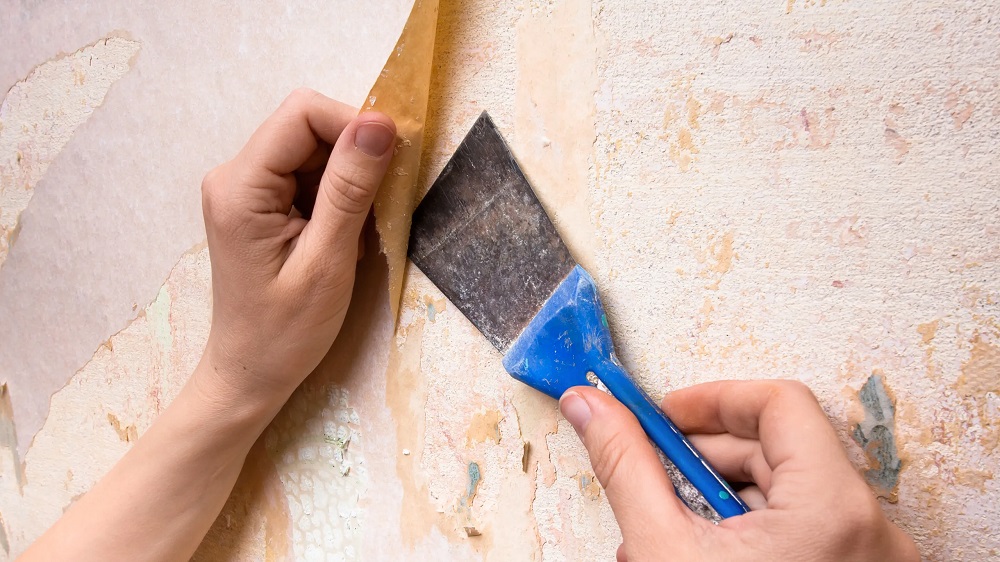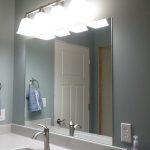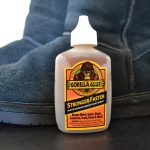Removing wallpaper glue may seem daunting at first, but it’s fairly simple.
If it’s stuck anywhere on your walls, removing it is as simple as scraping it off. However, there are some important steps you need to complete before you can complete the task.
So, how do you remove wallpaper glue? Removing wallpaper glue can be challenging.
However, it’s also not impossible. The first step is to remove as much of the glue as possible using something like a spatula or butter knife.
Next, scrape the remaining glue using a flathead screwdriver or putty knife. Finally, put a mixture of hot water and dish soap on the glue and let it soak for at least 1 hour.
Then scrape the glue off the wall and rinse the wall with water to help remove the soap. If the wallpaper is old or very heavy, you might need to use a commercial wallpaper remover.
How to Remove Wallpaper Glue?
Contents
- 1 How to Remove Wallpaper Glue?
- 2 How to Remove Wallpaper Glue with Baking Soda
- 3 How to Remove Wallpaper Glue with Vinegar
- 4 How to Remove Wallpaper Glue with Trisodium Phosphate
- 5 Do I Need to Remove Wallpaper Glue Before Painting?
- 6 Does Fabric Softener Really Remove Wallpaper?
- 7 Is It Hard to Remove Wallpaper Glue?
- 8 Does Dawn Remove Wallpaper Glue?
- 9 Final Words
Removing wallpaper is a tough task for many. It can be quite messy, and you may end up damaging the plaster or the wall in the process. However, with the right materials, tools, and technique you can easily remove wallpaper glue from your walls.
The following tips will help you to remove wallpaper glue:
- Find the right wallpaper remover – A wallpaper remover is the most important tool you’ll need to remove wallpaper glue.
- Prepare your tools – You will need a putty knife and a spray bottle. You will also need a scraper and a step ladder.
- Use the right technique – First, dip the putty knife in warm water to soften the glue. Then scrape the wall firmly using a back-and-forth motion to remove the glue. After you’ve removed all the glue, clean the walls using water and wipe it dry using a cloth.
How to Remove Wallpaper Glue with Baking Soda
Removing wallpaper glue is a daunting task, but it’s easier than you think! All you need are some baking soda and warm water. Here is a step-by-step process:
- Start by filling a spray bottle with water and baking soda. Spray the wallpaper with water until you see the glue loosen and bubble up.
- Next, scrub the wallpaper with a sponge and a cleaning solution.
- Let the wallpaper soak for a few minutes.
- Scrub the wallpaper again with a sponge to remove the glue residue.
- Apply some vinegar on the wallpaper. This will help remove stubborn glue residue.
How to Remove Wallpaper Glue with Vinegar
Wallpaper glue is an unsightly and uncomfortable obstacle, especially if you have to remove wallpaper for a painting project.
Removing wallpaper glue is tricky and time-consuming. It is slow to remove and requires a lot of elbow grease. However, there is a simple homemade solution – vinegar!
To remove wallpaper glue, all you need is some white vinegar and a clean cloth or sponge. Pour some vinegar onto a clean cloth or sponge and rub it onto the glue.
The vinegar will weaken the glue’s adhesive power, making it easier to remove. After rubbing the vinegar onto the glue, start wiping the glue away. Once the glue is softened, use a scraper or wallpaper scoring tool to peel away the glue.
How to Remove Wallpaper Glue with Trisodium Phosphate
Removing wallpaper glue can be a tedious task. However, with the right ingredients, you can remove wallpaper glue without having to spend a lot of money on expensive equipment.
To remove wallpaper glue, you need trisodium phosphate, a degreasing agent and sodium carbonate. These two ingredients can be found in most hardware stores or supermarkets.
Before you remove the glue, be sure to remove as much wallpaper as possible. Use a wallpaper steamer or steamer to remove any loose wallpaper. Use a flat-edged spatula to remove wallpaper glue and adhesive.
Mix the TSP and sodium carbonate in a 1 to 3 ratio. Apply the mixture to the wallpaper glue and let it sit for 20 minutes. After the 20-minute period, use a sponge to remove the wallpaper glue and adhesive.
Wear protective gloves when handling the TSP and sodium carbonate mixture. Also, wear protective clothing when removing wallpaper glue.
Do I Need to Remove Wallpaper Glue Before Painting?
Before repainting the surface, be absolutely sure that the walls are free of old paint or wall coverings.
Any residue left on the walls will cause the new paint to peel off later on down the road.
Does Fabric Softener Really Remove Wallpaper?
When fabric softener is applied to walls, it softens the paper backing of wallpapers so that it will be easier to strip them off of the wall.
This helps the wallpaper come off much faster and easier without damaging your walls in the process.
Is It Hard to Remove Wallpaper Glue?
Removing wallpaper glue can be easy or difficult, depending on how old the glue is.
If the glue is dry, you can scrape it off and your wall will be clean again. However, if the glue is still wet, you will need to use solvents or heat to remove it.
This can be difficult, especially if your wallpaper has a lot of glue on it. However, you shouldn’t try to paint over the glue because it will soak into the paint and make the wall even more difficult to clean.
If you don’t remove the wallpaper glue, it will stain your wall and the stain can be hard to get rid of. So, it’s important to remove all the glue from your wall before painting it.
Does Dawn Remove Wallpaper Glue?
Yes. Dawn is a household cleaner that people use to remove many stains and smells from clothes, dishes, and bathrooms.
However, you can also use it to remove wallpaper glue and residue from your walls.
To do this, mix a few drops of Dawn with lukewarm water in a spray bottle and apply it to the walls where the wallpaper was. Let it sit for 10 to 15 minutes, and then wipe the wall clean with a sponge.
Then, rinse off the sponge with clean water and let it dry. Your walls should be clean without the glue or residue.
Also Read: What Does Mod Podge Work On?
Final Words
The glue on wallpaper comes off easily with warm, soapy water.
Start by soaking a sponge in the soapy water, then vigorously rub the glue with the sponge. Then, use a plastic putty knife to scrap the glue off the wall.
Finally, rinse off remaining glue with clean water and wipe up any excess water with a dry cloth.






